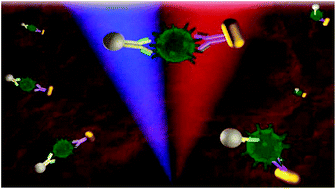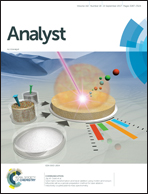Single-step homogeneous immunoassay for detecting prostate-specific antigen using dual-color light scattering of metal nanoparticles
Abstract
Conventional sandwich-type immunoassays are widely used for protein biomarker detection, yet their workflows are challenged by the need for multiple incubation steps separated by washing cycles. Conducting these immunoassays is thus rather time-consuming and labor-intensive. Moreover, the limited sensitivity around 0.1 ng mL−1 is challenging the monitoring of cancer recurrence, for instance after radical prostatectomy in the case of prostate cancer. Here, we report a single-step homogeneous immunoassay using dual-color light scattering of metal nanoparticles. We detect human free prostate-specific antigen (f-PSA) in a buffered protein matrix solution with a single mixing and incubation step, no washing or purification cycle, and with a total experiment time of less than one hour. The limit of detection is 20 pg mL−1, which is 5× lower as compared to a conventional ELISA kit for f-PSA. The simpler, faster and more sensitive detection of cancer biomarkers opens promising opportunities to improve cancer diagnosis and health monitoring after cancer treatment.



 Please wait while we load your content...
Please wait while we load your content...